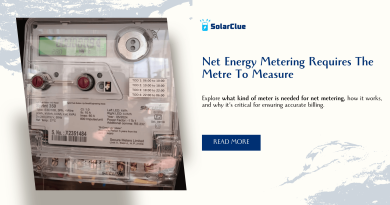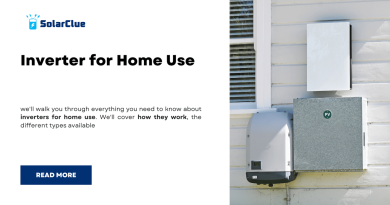Solar Rooftop On-Grid Rooftop Solutions
Imagine a world where every rooftop holds the potential to generate clean and renewable energy. Solar rooftop on-grid solutions are making this vision a reality, revolutionizing the way we power our homes and businesses. By harnessing the power of the sun, these systems offer a sustainable and economical alternative to traditional energy sources. In this blog, we will dive into the world of solar rooftop on-grid solutions, exploring their benefits, installation process, and impact on the environment.
Table of Contents
The Rise of Solar Rooftop On-Grid Solutions
In recent years, solar power has gained immense popularity as a viable alternative to fossil fuels and nuclear energy. As concerns about climate change and the need to reduce carbon emissions grow, individuals and businesses are increasingly turning to solar energy as a clean and sustainable option. And with the advancements in technology, solar rooftop on-grid solutions have become more efficient and cost-effective, making them a practical choice for consumers.
The Advantages of Solar Rooftop On-Grid Solutions
1. Clean and Renewable Energy: Solar rooftop on-grid solutions rely on the sun’s rays to generate electricity, making them a clean and renewable source of power. By choosing solar energy, you can reduce your carbon footprint and contribute to a greener future.
2. Cost Savings: Investing in a solar rooftop on-grid system can lead to significant long-term savings. Once installed, these systems generate electricity that can offset your energy bills. In some cases, you can even sell excess electricity back to the grid, enabling you to earn revenue.
3. Energy Independence: By installing a solar rooftop on-grid system, you become less reliant on traditional energy sources. When the sun is shining, your system generates electricity, allowing you to power your home or business without relying on the grid. This independence offers stability and peace of mind, especially during power outages or fluctuating energy prices.
4. Reduced Maintenance Costs: Solar rooftop on-grid systems require minimal maintenance compared to traditional power systems. With no moving parts, the risk of mechanical failures is significantly reduced. Routine inspections and cleaning of solar panels are usually sufficient to ensure optimal performance.
The Installation Process
Installing a solar rooftop on-grid system is a multi-step process that involves careful planning and the expertise of professionals. Here is a brief overview of the installation process:
1. Site Assessment: Professionals evaluate the rooftop’s suitability for solar installation. Factors such as shading, roof orientation, and structural integrity are evaluated to determine the system’s optimal design.
2. Design and Permitting: After the site assessment, the system is designed to meet the specific needs of the customer. This includes determining the number of solar panels, inverters, and other components required. Additionally, necessary permits and approvals are obtained from local authorities.
3. Installation: Transitioning from planning to action, install the solar panels, mounting structures, and inverters on the rooftop. Make wiring connections and implement safety measures to guarantee a secure installation.
4. Commissioning: After fully installing the system, rigorously test and inspect it to ensure compliance with all safety and performance standards. Connect the system to the grid, and it is ready to generate electricity.
The Environmental Impact
Solar rooftop on-grid solutions offer significant environmental benefits, helping to combat climate change and reduce pollution. By generating electricity from sunlight, these systems reduce the need for fossil fuel-based power generation. This, in turn, reduces greenhouse gas emissions, air pollution, and reliance on non-renewable resources.
Furthermore, solar rooftop on-grid utilize an abundant and inexhaustible energy source, the sun. While the manufacturing and installation processes have an environmental impact, it is minimal compared to the ongoing emissions associated with traditional power production.
Conclusion
Unlock the potential of clean energy with SolarClue® and embrace a greener future through solar rooftop on-grid solutions. These solutions offer a sustainable and economically viable option to power homes and businesses. By generating clean energy, reducing electricity bills, and actively contributing to the fight against climate change, solar rooftop on-grid systems bring numerous benefits. Investing in these solutions not only benefits the environment but also ensures long-term financial savings. Seize the opportunity to make a positive impact—choose SolarClue® and harness the power of the sun for a sustainable and cost-effective energy solution. Join the solar revolution now and take a significant step towards a cleaner, more efficient future.
Frequently Asked Questions
On-grid solutions involve solar panels on rooftops connected to the electrical grid, enabling efficient and sustainable energy production.
On-grid solutions are connected to the grid, providing a continuous power supply, while off-grid systems operate independently.
Benefits include cost savings, stable power supply, and potential compensation for surplus energy through programs like net metering.
Yes, on-grid solutions allow users to draw electricity when solar production is insufficient, ensuring a reliable power source.
Excess energy is often fed back into the grid, leading to credits or compensation for users through mechanisms like net metering.
They are most effective in areas with reliable grid connectivity, making them ideal for urban and suburban environments.
Installation involves mounting solar panels on the rooftop, connecting them to an inverter, and integrating the system with the electrical grid.
Regular cleaning of solar panels and monitoring system performance are typical maintenance tasks.
No, for safety reasons, on-grid solutions automatically shut down during power outages to prevent backfeeding electricity into the grid.
Many regions offer incentives, tax credits, or rebates to encourage the adoption of on-grid solar rooftop solutions.



